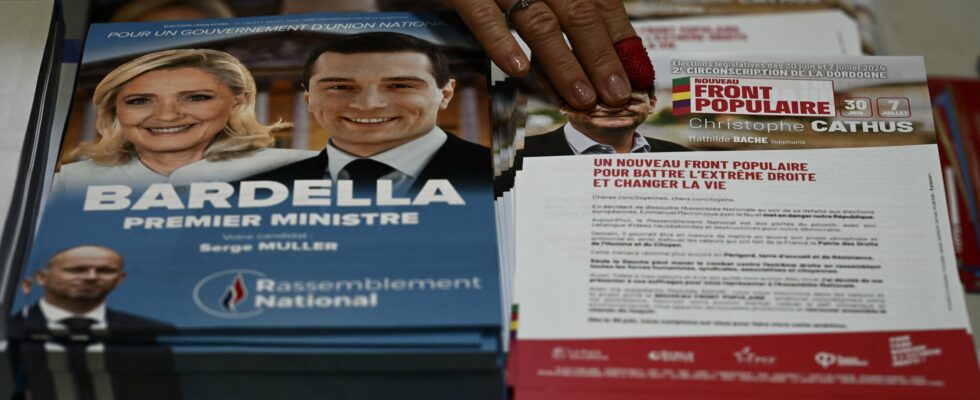It is almost the most important moment of the legislative elections. Between the closing of the last polling stations on June 30, the day of the first round, at 8 p.m., and July 2, at 6 p.m., the deadline to file a declaration of candidacy for the second round at the prefecture, a decisive part of the fate of the next National Assembly is played out. Triangular, withdrawal, republican front, commitment to support or not the future government or, at least, to abstain on certain financial texts and not to vote for censure: technical data and political considerations are mixed.
To qualify for the second round, a candidate must have obtained in the first round a number of votes at least equal to 12.5% of the voters registered in the constituency. If only one candidate meets this condition, the candidate who obtained the greatest number of votes after him can remain in the second round. In the event that no candidate meets this condition, only the two candidates who came in first can remain. Here, the abstention rate is therefore crucial. In 2022, at the national level, it was 52.5% in the first round and almost 54% in the second round. And to think that in 1978, in the first round, it had fallen below 17%! During the last dissolution, the one decided by Jacques Chirac in 1997, the abstention rate had been 32% in the first round of the legislative elections that followed, which was considered at the time to be a rather low figure.
This time, a fairly strong participation is expected, which will notably have an impact on the number of triangulars. If, in constituency A, the abstention is 50%, a candidate needs to obtain 25% of the votes to qualify; if the abstention is 40%, he needs 20.83% of the votes cast. In 2017, there was only one triangular, in 2022, there were eight. But in 1997, there were 79, almost all of them with a representative of the extreme right: the left took advantage of this situation to become the majority. A triangular in the second round responds to mechanisms very different from those of a duel: the voter must choose between supporting their preferred candidate even if their chances of winning are low, or making a choice of reason by considering it a priority to beat this or that candidate.
The problem of withdrawals
Another complexity arises. You can qualify for the second round… but not show up. This is where the problem of withdrawals comes into play. Should a candidate who has no chance of winning maintain his position at all costs? The party headquarters have a dual responsibility: defining a national political line and studying constituencies on a case-by-case basis – they will also have to ensure the application, locally, of the instructions given in Paris. This strategy to be defined goes hand in hand with another: to what extent should we build the famous “republican front”? And – this is the novelty of recent years – should this republican front apply only to the extreme right? For a long time, one rule prevailed: that of republican withdrawal when a far-right candidate was in a position to win. In 2011, under the leadership of Nicolas Sarkozy, and during local elections, the right began to favor neither-nor in the event of a second round between the National Front and the left.
During this legislative campaign, several voices were heard on the left, those of François Hollande and Raphaël Glucksmann for example, to advocate a systematic withdrawal in favor of the best-placed RN opponent, whatever their label, by asking for reciprocity. On the right, on the other hand, several leaders indicated that between the RN and LFI, they would vote blank. The Macronists, for their part, even before the first round avoided presenting candidates in around sixty constituencies. A question will arise for them and for the leaders of the Republicans (those who did not follow Eric Ciotti): does the cordon sanitaire stop at LFI or should it protect against the New Popular Front as a whole? The Republican front, increasingly battered since the Chirac-Le Pen duel of 2002 gave it new life, will undoubtedly have lived its last hours during the 2022 presidential election. The 2024 legislative elections will mark his burial.
This post-first round sequence will count all the more because it will resurface after the second round, when a majority will try to establish itself in the Assembly (unless one camp attracts 289 of the 577 deputies). According to a principle: tell me what you did after the first round and I will tell you which camp you are in.
.
